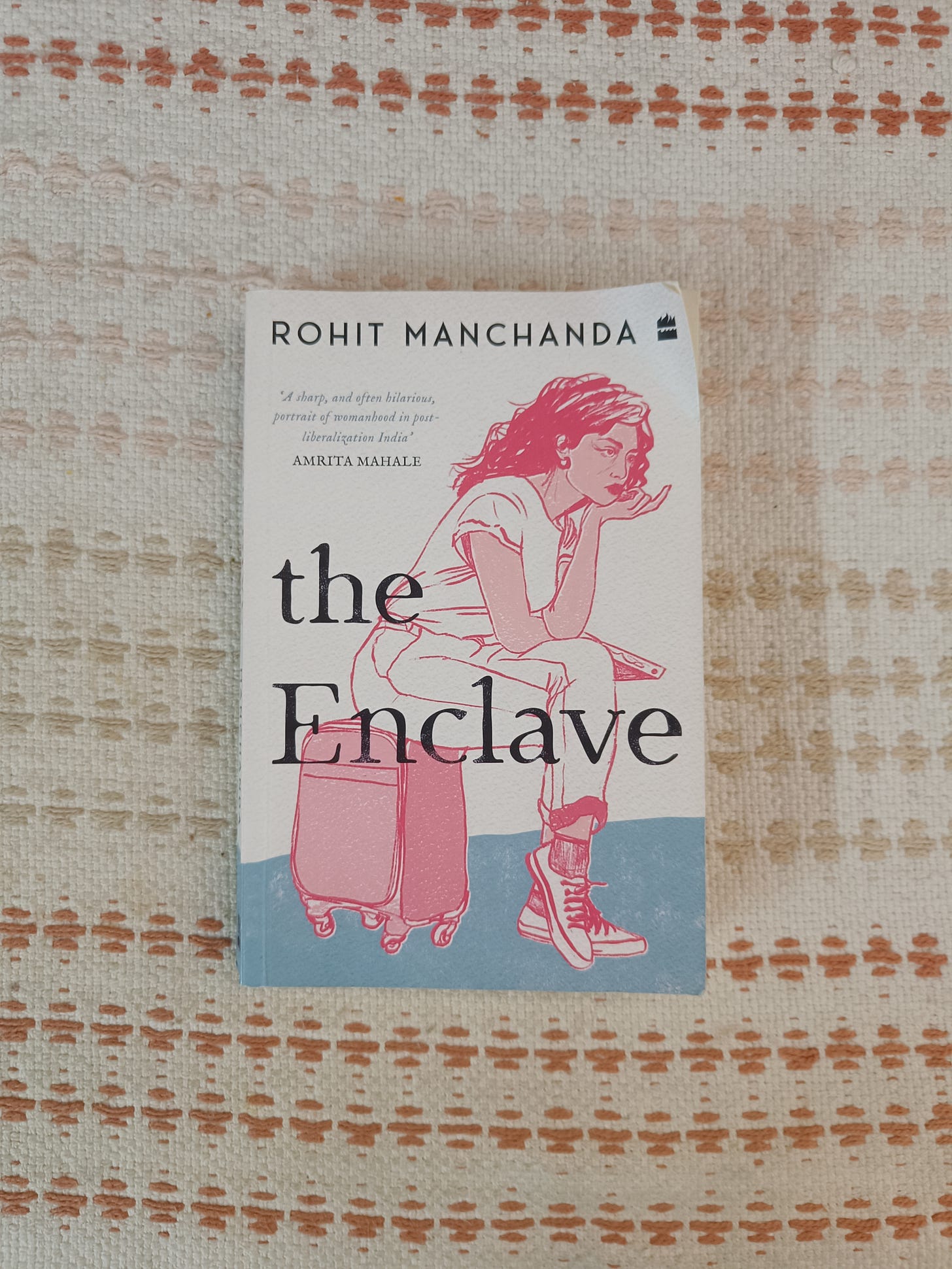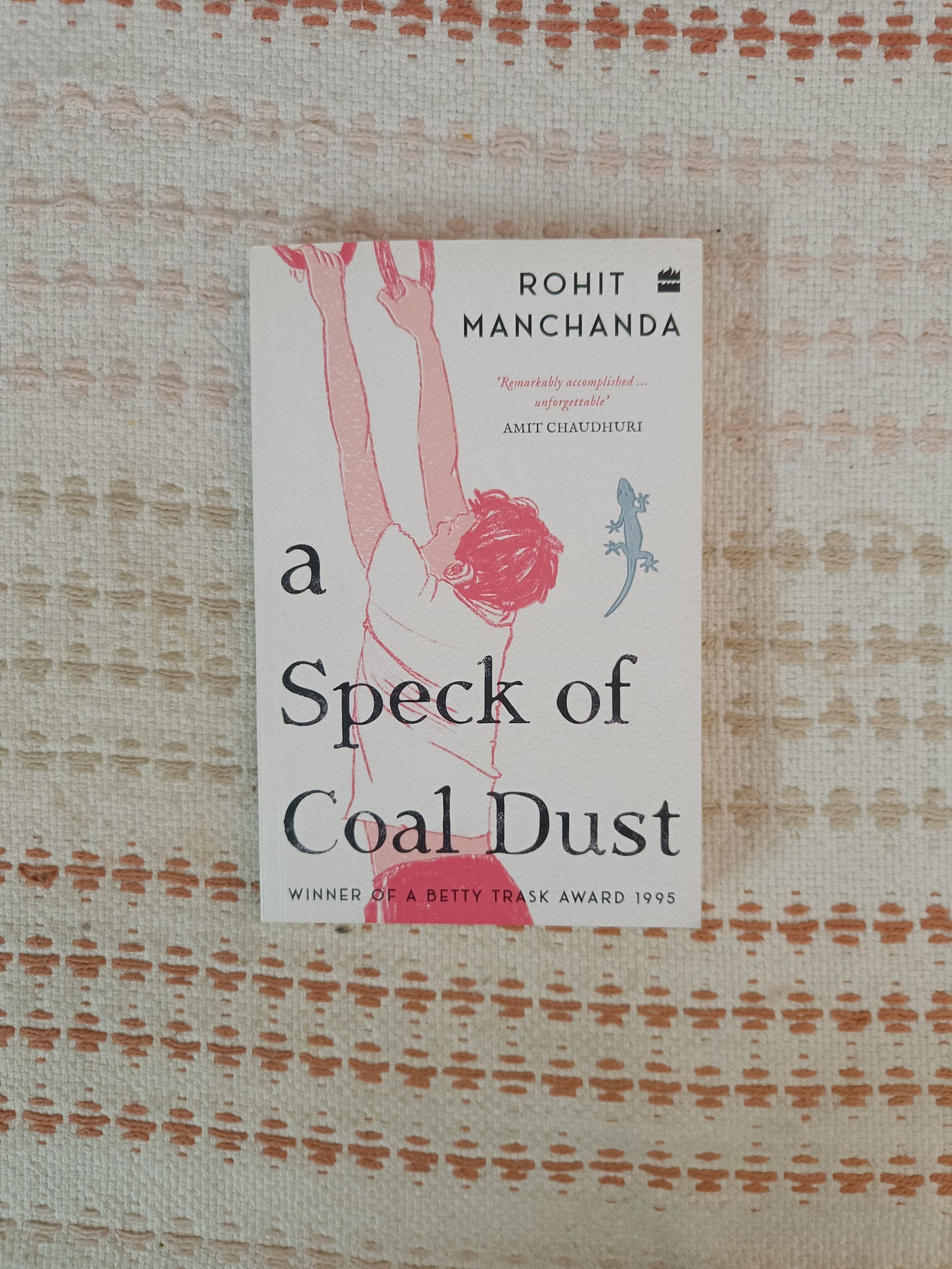A Word on Rohit Manchanda's Novels (not a review)
Novels' protagonists in the Manmohan Singh years, the vestigial flurries of Nehruvian India, and the provincial upbringing of cosmopolitan Indian English writers
Beginning of November, I was at the Manorama Hortus festival in Calicut, where I had a session with Mumbai-based author Rohit Manchanda. During the session, we talked about each other’s work, finding thematic convergences and divergences without the help of a moderator (which turned out to be great). Our on-stage engagement was, in fact, a delightful cut of the long conversations we had all through our two days at the festival. Rohit is a wonderfully articulate person, with a sophistication that carries well to his work and is worn casually in person. After our final evening at Calicut, we sensed that our interaction might have been something that is—counter-intuitively—a rare thing among writers: the discovery of a fellow, kindred spirit, with loads to share while a certain ease with vulnerability becomes slowly palpable at the pace of chit chat.
In June this year, my first encounter with Rohit’s prose was a stop-start one. This was when Harper Collins sent me his two novels—The Enclave, published the first time this year, and A Speck of Coal Dust, re-issued this year (it was first published way back in 1995, with the title In the Light of the Black Sun). I read about fifty pages of The Enclave and, marvelling at its sentence-level dexterity, wrote a short, congratulatory email to its editor saying the same, while also voicing my supposition that editing the novel must have been a delight as well as a headache, the latter because of the many ways in which Rohit bends and turns sentences to his will. I had already noted sentences with semi colons and colons and em dashes all, sentences with serial colons, and also a sentence with an ellipse that groped for a word while saying so. As to repertoire and word choices, safe to say that Rohit is never too worried about sending the reader to the dictionary, which was to me a welcome departure from simple writing, a thing that seems to have been taken as diktat by many contemporary practitioners, often pretending that their English-language works have something significant to say about the state of the nation (a largely non-English affair in this country) and must therefore say it simply for wider purchase. In that most common haze, Rohit’s writing seemed like a vector going in a new direction: here was, I thought, an Indian author fully committed to using the full range of their English, to micro-compositions inside crafty set-pieces, assonance and alliteration a priority, the injunctions of story and plot be damned.
I could not finish The Enclave in June, though. The kind of attention that writing like Rohit’s demands is unfortunately as difficult for me to summon as it is for everyone else, and June just didn’t offer me the time I needed for it. It might have been possible to browse through it, but with the conviction that I wanted nothing less than to savour the novel to the utmost, I kept it aside.
When I did come back to Rohit’s books after a few months, I finished them both in quick time. There was a curious realisation then: despite their commitments to linguistic pleasures, the novels do end up rendering a portrait of the so-called state of the nation, even if only in their own chosen snapshot of time and space. The Enclave, for example, set mostly in 2007, and charting an episodic coming-of-age for forty-something Maya, gives us willy-nilly a picture of what it was like for the middle classes in Mumbai during Manmohan Singh’s first term. Maya is divorced, has a diverse selection of lovers, has some talent with poetry, and is riven with a general sense of having let life pass without making much of it. That Maya’s evolved concerns are grounded in material security is itself an irritation to her. Her mutual funds and other investments, managed by her father, have done exceptionally well in post-liberalisation economy in general and MMS’s first term in specific, with GDP growth rates touching double figures. The general air of money in the middle classes has let to some sort of social liberation, too, especially for women like Maya, especially in select spaces and select company in Mumbai, where Maya lives and works. When one of Maya’s more platonic lovers, Softs, takes to the social-warrior speak he is fond of, Maya’s usual response is some variant of an eye-roll, for Maya clearly sees that Softs too enjoys the good things in life and isn’t an entirely unwilling participant in the capitalist economy he is so quick to deride.
In her life-stage and attitudes, I found The Enclave’s Maya not much different from Qayenaat from Anjum Hasan’s The Cosmopolitans. Rohit hasn’t read Anjum’s novel yet, and while recommending it insistently to him I ended up saying something that might not actually be as hyperbolic as it sounds on first hearing: ‘Maya and Qayenaat are sisters!’ In writing of novels published since 2014, and even while thinking of them, I have often found The Cosmopolitans to be a useful point of entry. The novel’s protagonist, Qayenaat, is an art-circle person in Bangalore, a critic, perhaps, and perhaps also an artist1, with vague ideas about her own potential in arts, potential which is now veering towards frittered away territory: Qayenaat is fifty plus, so there isn’t much time left to come to art in a fresh way, and there is, of course, a case of the impostor syndrome, the idea that there may not be genuine talent underneath. Set, presumably, in Manmohan Singh’s second term, Hasan’s novel thus presents us a protagonist whose artistic fancies are once again grounded in the material sureties provided by two decades of economic well-being and whose cosmopolitan attitudes are charged as much by current urban consumerism as they are by memories of growing up in an environment of scarcity. Exactly the same can be said of Manchanda’s Maya. With both these women, in fact, there is a strong sense that it is whatever cultural education they had during their growing-up years, during the years of scarcity, so to speak, in smaller cities or towns, that has turned out to be their biggest endowment, one that no affectation or performance has managed to erode in subsequent decades. In the midst of the high Manmohan Singh years, then, these women circumambulate their Nehruvian ethos. Very soon, as we outside the novels know, the cord shall be cut, and a newer New India shall come to roost; the circumambulation shall become difficult, even dangerous. But that’s for other novels to bear.
Growing up in relative material scarcity, with limited—but extremely valued for that very reason—exposure to culture and language, and armed with an experience of freedoms quite different from today’s, especially as pertaining to open spaces, landscapes, vegetation, and animal life: I wonder sometimes if these elements constitute a shared upbringing among a large subset of Indian writers in English. In a way, this amounts to the location of cosmopolitanism’s root—insofar as we believe that all sensible writers may be called cosmopolitan—in a certain kind of privileged, time-bound provincialism. Rohit Manchanda’s A Speck of Coal Dust turned out to be a novel of this upbringing. Its pre-teen protagonist Vipul is growing up near a bunch of coal mines, somewhere in today’s Jharkhand, in the early 70s. His father has a managerial job there. Life isn’t all it could be in Delhi, but this is not to say that it is bad: there are comics, visits from cousins, missionary school, BBC world service, swamis who teach yoga, and vast open spaces. The landscape is dire for the most part, but only as backdrop to the tiny adventures and incidents that the child’s life is filled with. Rohit sets each chapter as a unique set-piece: my favourite was the one in which Vipul reluctantly, and at times furiously, suffers a haircut. Occasionally, the third-person narrator is too distant from Vipul even when in proximity: meaning that the descriptive repertoire and vocabulary used by the narrator exceeds Vipul’s, even when the purported subject of narration is close to Vipul’s perception. This can be jarring in a couple of places, though the effect is mitigated by the fact that what one gets in the bargain is some of the best descriptive flourishes one has ever read.
I told Rohit that my own growing-up in the 90s, on a state-government-managed farm near Muzaffarnagar, Uttar Pradesh, where my father was a sugar-cane scientist, was not much different from Vipul’s in the 70s, with the same access to open spaces, similar schooling (I went to a convent school), similar fascination with collections of comics, and a general veneration of any English programming one could access. Rohit immediately understood what I meant and theorised that from the 40s to the 80s, not much had changed in India, and so it followed that children of the salaried classes, especially those of government employees or the like posted in the so-called hinterlands, had similar childhoods. The one thing that had given my 90s upbringing an 80s flavour, thus bringing it in the range of those five decades of stasis, was the lack of a television. We had one, but my father would only allow Doordarshan, and there would anyway be no electricity during the best hours.
A final word on Rohit’s novels: they demand a little more attentiveness at the sentence-level, but this demand comes with the promise of a lot more joy. I found it to be a wonderful deal. Best consumed chapter by chapter. Some of the best English prose today.
the ‘perhaps’ here are partly because don’t remember precisely what Qayenaat is, and partly because the novel itself isn’t very specific about it, as far as I remember




Thank you, Tanuj! Ordered two of his books...!
Loved this introduction to the writer and I'll certainly be reading his work soon 🌟🦑